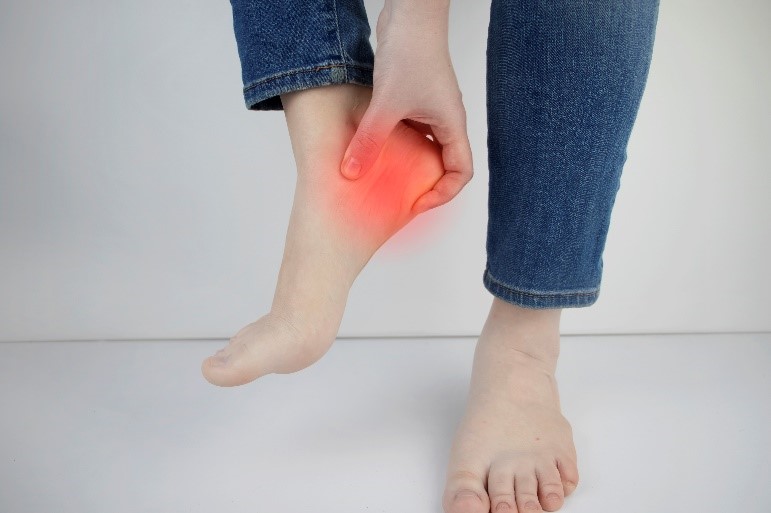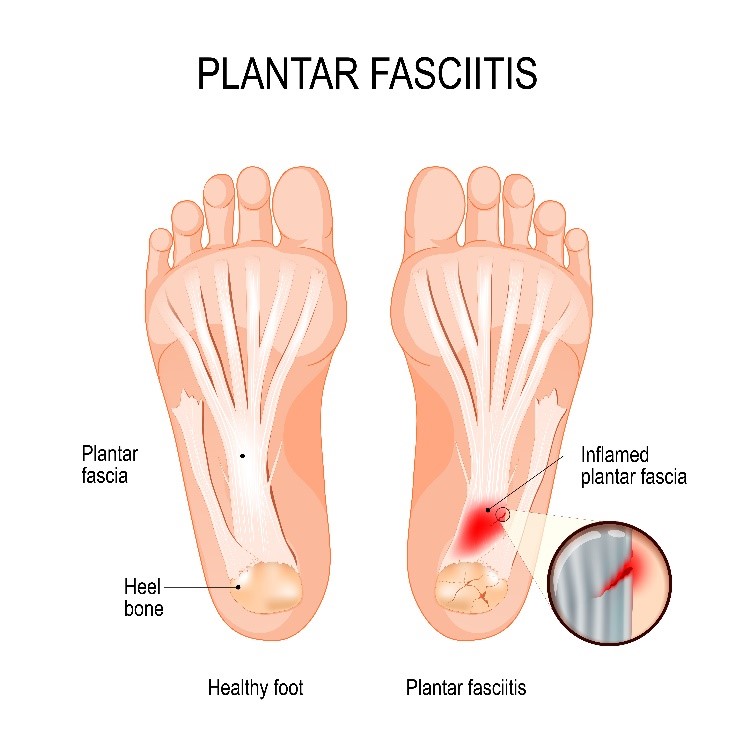How to Beat Plantar Fasciitis
Notice more foot or heel pain lately? Working from home may be a factor. Over the past few years, with more people working from home, there have been more reports of plantar fasciitis, “lockdown feet” or “pandemic feet”.
Here’s why!
- Working from home we are barefoot, or wearing slippers, more often than ever. Without having to put on “real shoes” to go to work every day, people are walking around in their homes not supporting their feet.

What Exactly is Plantar Fasciitis?
- Plantar Fasciitis is defined as an inflammation of a thick band of tissue that runs across the bottom of the foot and connects the heel bone to the toes. This is called the plantar fascia.

Symptoms of Plantar Fasciitis
- The most common symptom would be stabbing pain in the bottom of your foot near the heel, occurring when you step/stand. The worst periods of pain can occur in the morning with your fist steps out of bed, when you stand for a long time, or standing up after being seated.
Causes of Plantar Fasciitis
- The plantar fascia is in the shape of a bowstring that supports the arch of your foot, absorbing shock while you walk. With increased tension/stress, small tears can occur. Repeated stretching and tearing can cause inflammation in the fascia.
- Cause remains unclear in most cases but here is a list of possible factors that you are at a greater risk to develop plantar fasciitis:
- Runners
- People who are obese or overweight
- Structural foot problems (high arches, flat feet)
- Wearing shoes with inadequate support (soft soles, no arch support)
Risks if Plantar Fasciitis Goes Untreated
- Ignoring your pain could result in chronic heel pain that hinders day-to-day activities.
- The pain could lead to you changing the way you walk which might lead to further foot, knee, hip or back problems down the road.
Treatment & Tips from Dr. Phipps*
- Avoid injections, they can make your pain worse and are not treating the core of the problem.
- Stretching and exercises are generally unproductive and not helpful if you have had pain for longer than 3 months.
- Please don’t invest in orthotic inserts until you have spoken with a specialist. Many of my patients have spent hundreds of dollars on inserts from orthotics stores. Most of the time with proper treatment we can avoid orthotics or inserts.
To sign up for a consultation to see if Dr. Phipps can help you with this, click here to get started!
Phipps Soft Tissue & Spine – Williamsville, NY Chiropractor
*Please note that every patient is different. The content and tips displayed on this page are for educational purposes only, and do not substitute for medical advice. Please consult with a medical or healthcare provider, such as Dr. Phipps, for specific diagnosis and treatment advice.
Williamsville, NY 14221 Chiropractor
